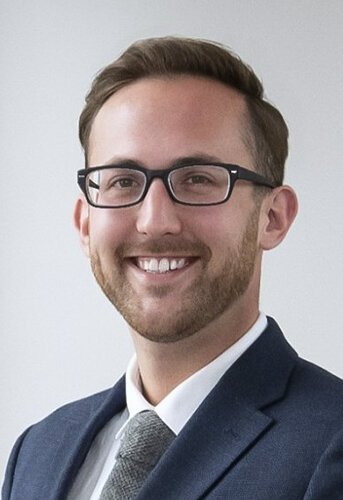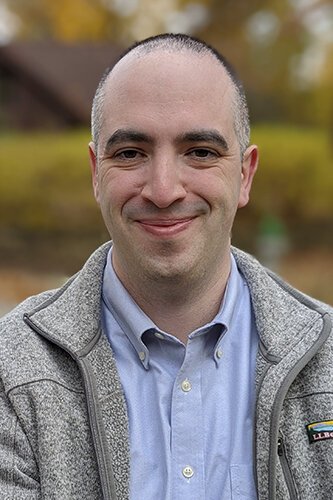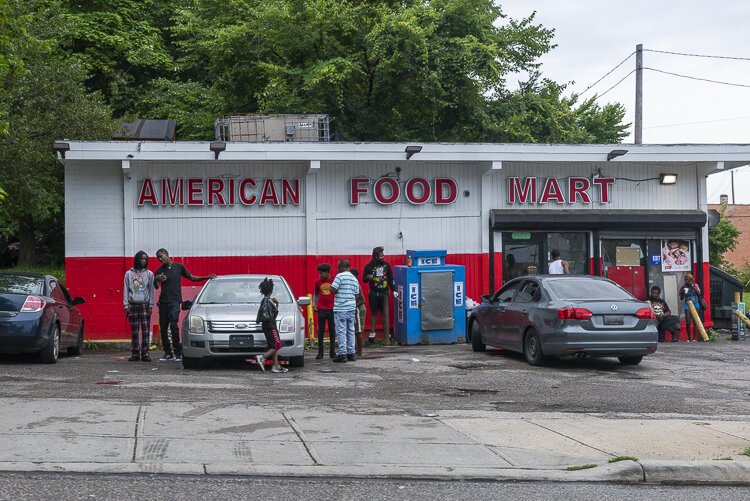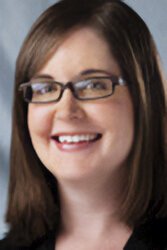Shaping the future of the environmental impact of transportation: What’s the solution?
According to the Federal Transit Administration (FTA), carbon dioxide makes up 95% of all transportation-related greenhouse gas emissions from cars, SUVs, and pickup trucks emitting carbon dioxide by running on conventional gasoline, diesel, and other fuels.
Combined, these vehicles account for roughly two-thirds of transportation-related emissions—ranking transportation as the second largest source of total U.S. greenhouse gas.
As a result, the climate is impacted. Environmental experts say these greenhouse gas emissions must be reduced by 50% to 85%—or even 100%, as some suggest—by 2050 to limit global warming to four degrees Fahrenheit in an attempt to avoid many of the worst impacts of climate change.
So, what can be done?
 Jonathan Steirer, managing director with the Great Lakes Energy InstituteGlobal Shapers, a diverse group of young, impact-oriented leaders working to affect change in our community while leveraging a global network, is hosting a series of conversations about the environment with local thought leaders. The first one was held in September and explored “Shaping the Future of Transportation” and was moderated by Cleveland Global Shaper Jonathan Steirer, managing director with the Great Lakes Energy Institute and public transportation advocate.
Jonathan Steirer, managing director with the Great Lakes Energy InstituteGlobal Shapers, a diverse group of young, impact-oriented leaders working to affect change in our community while leveraging a global network, is hosting a series of conversations about the environment with local thought leaders. The first one was held in September and explored “Shaping the Future of Transportation” and was moderated by Cleveland Global Shaper Jonathan Steirer, managing director with the Great Lakes Energy Institute and public transportation advocate.
During the discussion, it became obvious that, as transportation shapes the opportunities available to individuals and impacts their health, sustainable modes of transit must be a component of maintaining a healthy environment.
But what does that look like going forward?
Although there seems to be no magic bullet, several strategies are being proposed—from transitioning to electric vehicles (EVs), to more reliance on public transit, to completely eliminating cars from the road.
Going electric
Rap Hankins, a Trotwood, Ohio resident and community EV activist, sees EVs—particularly in African American communities—as one solution. He says he believes this to be true for this group of people because, he says, among Black communities cars are typically tied to one’s identity—making it difficult for them to completely detach.
 Rap Hankins“My vision for the present and the future is the importance of moving people out of gas cars and into electric vehicles,” says Hankins. “I think that’s really essential.”
Rap Hankins“My vision for the present and the future is the importance of moving people out of gas cars and into electric vehicles,” says Hankins. “I think that’s really essential.”
He proposes using federal dollars to install Level 2 EV chargers (those that generate 40 miles in an hour) and Level 3 EV chargers (that generate up to 200 and 300 miles in 20 minutes) throughout underserved communities and reduce the price of EVs to where they are affordable.
“The planet can’t wait any longer,” says Hawkins. “We see, with everything going on, we have to get people out of gas cars and into EVs.”
Eco-friendly bus lines
Mandy Metcalf, senior planner for Greater Cleveland Regional Transit Authority (RTA) says RTA is seeing a lot of funding opportunities for transitioning to zero emission buses including the charging infrastructure that’s needed and the buses themselves. But there’s a big challenge to get there.
“It’s a separate infrastructure from other infrastructure plans being rolled out across the state for private vehicles,” says Metcalf.
At the same time, she says, RTA has created both a climate change and a zero emissions plan.
“We are aligning ourselves with the Biden Administration's overall goals of 50% reduction by 2030 and zero emissions by 2050,” says Metcalf. “We’re also taking a very realistic perspective about what we can actually accomplish.”
 Mandy Metcalf, senior planner for RTAMetcalf says RTA is looking at reducing its fleet’s emissions by 30% from the 2018 levels. As an aspirational goal, she says RTA is first looking at transiting to Compressed Natural Gas (CNG), an option for fueling in the transit industry, will then eventually move to electric buses, and then achieve zero emissions by 2050.
Mandy Metcalf, senior planner for RTAMetcalf says RTA is looking at reducing its fleet’s emissions by 30% from the 2018 levels. As an aspirational goal, she says RTA is first looking at transiting to Compressed Natural Gas (CNG), an option for fueling in the transit industry, will then eventually move to electric buses, and then achieve zero emissions by 2050.
That starts with an EV buses pilot program, Metcalf says.
“In the climate change plan, we have strategies that center around modeshift and ridership as well because that’s an important part of it,” she says.
"Modeshift" is a term used to describe moving people from one mode of transportation to another. Metcalf says her personal vision for the future of transportation starts there.
“I see frequent transit connecting neighbors in an urban environment, where you can walk and bike and car use is reduced, not eliminated,” she says.
A big shift
Alex Rubin, treasurer of Clevelanders for Public Transit, an advocacy group that supports safe, accessible, affordable, reliable, and sustainable transit, says he believes moving away from car-dominated societies completely is the best way to go.
 Alex Rubin, treasurer of Clevelanders for Public Transit“That’s a decision we have to make, and I think it boils down to whether we are satisfied with the status quo or not,” says Rubin, who defines the ‘status quo’ as a “car-dominated society where people see their car as a lifeline because it is a lifeline.”
Alex Rubin, treasurer of Clevelanders for Public Transit“That’s a decision we have to make, and I think it boils down to whether we are satisfied with the status quo or not,” says Rubin, who defines the ‘status quo’ as a “car-dominated society where people see their car as a lifeline because it is a lifeline.”
The FTA reports that car transportation alone accounts for 47% of the carbon footprint of a typical American family with two cars, by far the largest source of household emissions and, as such, the largest target for potential reduction. At the same time, the average passenger car in the U.S. produces just under one pound of carbon dioxide per mile traveled.
In addition to their impact on the environment, Rubin argues that automobiles—all forms—are deadly and take up too much space. “This is the kind of path that I would like to see we turn away from,” says Rubin.
“And, in the city, we need to be really conscious of the decisions made every day in the halls of power that are keeping us on this track of car-choked streets and children being run over and a rickety-dying transit system,” he says.
 Wealthy districts have three times as many supermarkets as poor ones do and grocery stores in African American communities are usually smaller with less selection.Equity concerns
Wealthy districts have three times as many supermarkets as poor ones do and grocery stores in African American communities are usually smaller with less selection.Equity concerns
As vice president of racial equity and dealer relations for Drive Electric Dayton and vice president of racial equity for Miami Valley Regional Planning Commission in Dayton, EV activist Hankins insists that racial equity must remain foreground among these transportation conversations.
“Many times, in the African American community, we don’t have [quality] stores or restaurants because of the lack of equity,” says Hankins, speaking to the fact that many urban-dwelling African Americans live in food deserts.
Food deserts, geographic areas where residents’ access to affordable, healthy food options (especially fresh fruits and vegetables) is restricted or nonexistent due to the absence of grocery stores within convenient traveling distance, are most commonly found in Black, Hispanic, and low-income areas.
According to The Food Empowerment Project, which seeks to create a more just and sustainable world by recognizing the power of one’s food choices, studies show that wealthy districts have three times as many supermarkets as poor ones do, and that white neighborhoods contain an average of four times as many supermarkets as predominantly Black ones do while grocery stores in African American communities are usually smaller with less selection.
With that in mind, Hankins says Black Americans travel 15 to 20 more miles than the average white American in Ohio to purchase products and for work. Therefore, he argues, they are much more attached to their car if they have one.
So, when people talk about moving strictly to mass transit, Hankins says, one must keep Black and poor communities’ ability to access goods and jobs in mind.
“In an ideal world, mass transit would work if racial equity was real,” he says
 Suburban and rural factors
Suburban and rural factors
Beth Glas, executive vice president of Maximum Accessible Housing of Ohio in Cleveland, also examines transportation sustainability issues from an equity lens as she advocates for the accessibility community. She also points out the public transportation access in rural and suburban communities is limited due to the lack of sidewalks.
Glas says, because of the rarity of sidewalks in some suburban and rural areas—like Hankin’s concern about Black communities—access to goods and services generally requires having a vehicle or access to some form of transportation.
She goes on to say there are many services, like rideshare, that people with disabilities can’t participate in because the vehicles don’t accommodate them. They simply aren’t equipped for managing accessibility, she says.
“The drivers don’t know, aren’t used to speaking to people with disabilities,” she says. “There’s no training on ableism and attitudes, [like] when and how to touch someone’s wheelchair.”
 Beth Glas, executive vice president of Maximum Accessible Housing of OhioGlas continues, “And, it’s even more complicated because RTA is under the purview of the Americans with Disabilities Act but the individual drivers on Lyft and Uber, they’re not. That creates a lot of customer service and safety issues. It’s really keeping people with disabilities from having all the same options to participate in their communities, affordably.”
Beth Glas, executive vice president of Maximum Accessible Housing of OhioGlas continues, “And, it’s even more complicated because RTA is under the purview of the Americans with Disabilities Act but the individual drivers on Lyft and Uber, they’re not. That creates a lot of customer service and safety issues. It’s really keeping people with disabilities from having all the same options to participate in their communities, affordably.”
Glas believes there’s room to grow and a lot of space to make those adjustments. “It’s just a matter of wanting to make those changes,” she says.
“When thinking about building new fleets of vehicles with different sustainable options, thinking about incorporating [accommodation features for the disabled] from the beginning, I think, would be really helpful.”
Glas also thinks, in terms of the future, that more sidewalk and pedestrian travel safety, especially for the accessibility community, needs to be taken into consideration.
“We need sidewalks that are wide and flat and well-lit with barriers and benches and more options [for persons with disabilities],” she says.
Hearing the differing perspectives makes it clear there’s no one easy solution. However, Metcalf, again, says the first climate change strategy that can really produce benefits quickly, not only for climate but for so many co-benefits, is modeshift away from cars.
“That gets us not only climate benefits but safer roads, better health outcomes, lower air pollution, shifting riders into transit, access to more affordable jobs, access to education and all the things people need as well as an opportunity around investment for transit in the city and underdeveloped and previously redlined communities.”
Metcalf continues, “We’ve put that in our plan. There’s a lot of challenges but I think we can get there.”
Up next: The Future of Water Health & Equity. The next conversation in the series will be in February.
This is the fourth story in a 10-part series designed to highlight how an intergenerational model is helpful in moving the needle in so many aspects of Cleveland as well as to uplift narratives of resilience and impact within the environmental justice space. Upcoming stories will spotlight different organizations working on environmental justice and climate change as well as capture the intergenerational voices working on these issues.







